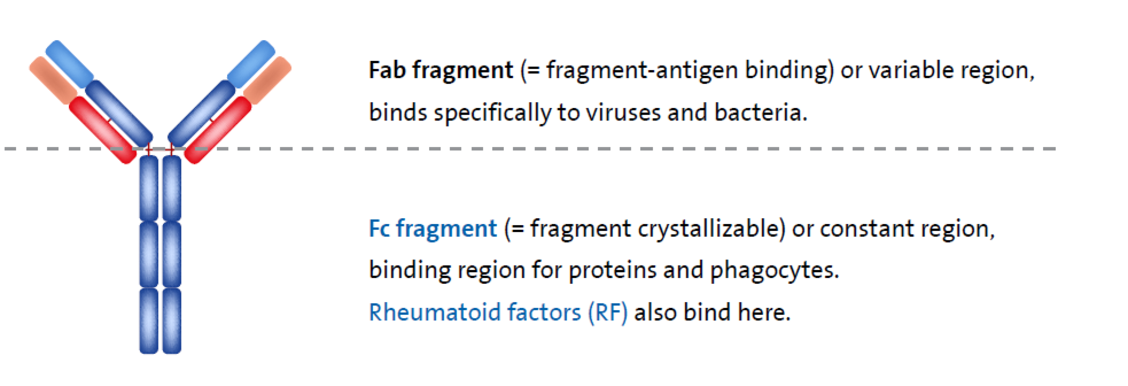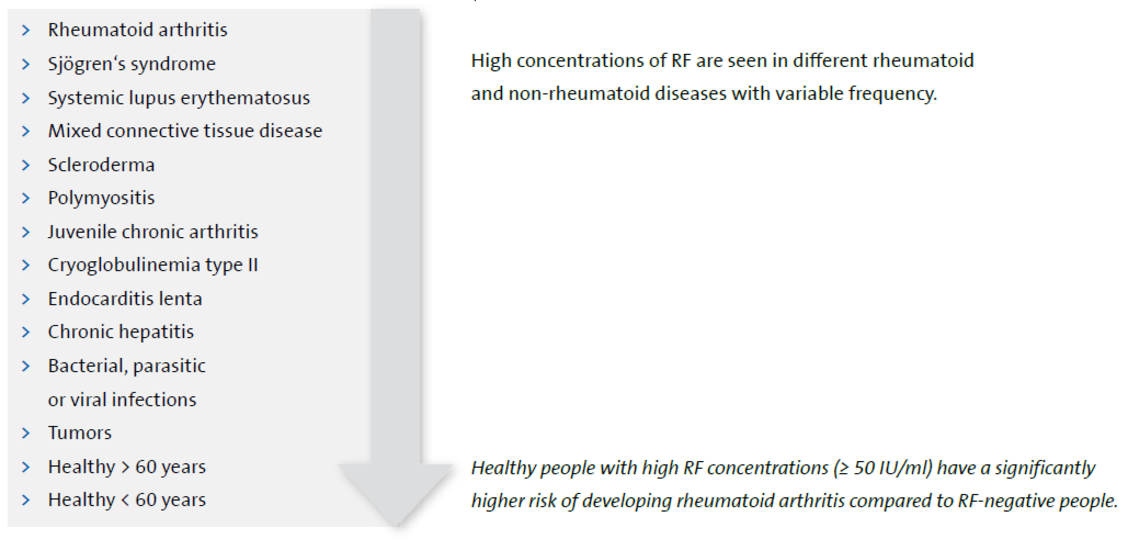- HUMAN Diagnostics Worldwide
- Lab Professionals
- Trends & Topics
Rheumatoid Factors Rheumatism – when the body fights itself
Rheumatoid arthritis is a chronic inflammatory systemic disease characterized by painful joint swelling, joint tenderness, mobility restriction and joint destruction. Worldwide, rheumatoid arthritis is the most common inflammatory joint disease; it is a disease of older age, with women being affected about 3 times more often. Rheumatoid arthritis often affects the small joints of the hands and feet, but it can also affect the large joints such as the shoulder, hip and knees. In the beginning of the disease, only one joint or a few joints may be involved. Due to the presence of rheumatoid factors (RF) and anticitrullinated proteins, which can precede clinical manifestation by many years, rheumatoid arthritis is considered an autoimmune disease.
RF – Biomarker for rheumatoid arthritis
RF are autoantibodies directed against the Fc fragment (= constant region) of the IgG class immunoglobulins.
IgGs are the most common immunoglobulins in serum; they are part of the acquired immune system and act mainly against viruses and bacteria.
By enzymatic cleavage, the IgG can be broken down into Fab and Fc fragments
Diagnostic scheme1,2,3
For the diagnosis of rheumatoid arthritis, the ACR/EULAR* classification can be used, which considers the following criteria:
- Number of small and large joints affected
- Serum concentration of rheumatoid factors (RF) and/or anticitrullinated proteins
- Presence of inflammatory markers such as C-reactive protein and erythrocyte sedimentation rate
- Duration of symptoms
The early diagnosis of rheumatoid arthritis is crucial so that irreversible joint destruction can be avoided through adequate therapy.
*American College of Rheumatology/European League Against Rheumatism
Is a positive RF finding indicative for rheumatoid arthrits?
Frequency of RF-positive findings in descending order4
RF reference ranges
| Age group | Conventional unit | Sl unit |
|---|---|---|
| Adults | ≤ 20 IU/ml | ≤ 20 kIU/l |
Ordering information
HUMANs reagent kits for the quantitative determination of RF.
| REF | Name/Type | Unit/Size |
|---|---|---|
| 11261PA | RHEUMATOID FACTORS multipurpose reagent | 2 x 50 ml |
| 11261300 | RHEUMATOID FACTORS system reagents | 1 x 100 tests |
| 11261600 | RHEUMATOID FACTORS system reagents | 1 x 210 tests |
| 11361 | RF Standard | 2 x 3 ml |
| 13010 | TURBIDOS Control, 2-levels | 2 x 2 x 3 ml |
| ITC60003 | RF IgM | 96 tests |
| ITC94000 | Arthritis-LIA | 24 tests |
To test further for rheumatoid arthritis, we recommend:
| REF | Name/Type | Unit/Size |
|---|---|---|
| ITC92000 | ANA LIA | 24 tests |
| ITC92007 | ANA LIA XL | 24 tests |
| ITC60001 | ANA Screen | 96 tests |
| ITC70001 | ANA Screen (cut-off) | 96 tests |
| ITC60015 | RA 33 | 96 tests |
For information on further assays for monitoring inflammation and organ impairment in the context of rheumatic arthritis use the following links:
For more assays for the diagnosis of rheumatic and autoimmune diseases use the following link:
References
1. Aletaha, D. et al. Rheumatoid arthritis classification criteria: An American College of Rheumatology/ European League against Rheumatism collaborative initiative.Arthritis Rheum 2010; 62:2569–2581.
2. Hofmann, W. et al. Klinikhandbuch Labordiagnostische Pfade, 2012, e-ISBN 978-3-11-022873-1
3. Leitlinien der Deutschen Gesellschaft für Rheumatologie e.V., 2020
4. IMD, Diagnostikinformation Nr. 224





